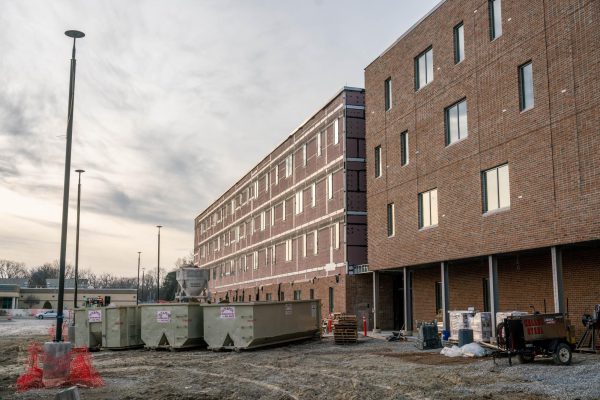Moody’s Upgrades the College’s Credit Rating to Stable
Even amid the financial uncertainties that have come with the pandemic, Moody’s Investor Service recently upgraded Oberlin’s credit rating. The College was given a negative outlook on its credit rating in 2017 by Moody’s Investor Service, but its Aa3 designation was upgraded to stable last Thursday. Two weeks ago S&P, which previously rated the College at AA with a negative outlook, downgraded its rating to AA- with a stable outlook, which is in line with Moody’s assessment level.
These ratings assess how risky it is for investors to loan Oberlin money based on Oberlin’s revenue, endowment, debt, enrollment, institutional government, and physical infrastructure, among other considerations. Aa3 is Moody’s fourth-highest credit rating and indicates a very low credit risk for potential investors. The negative outlook previously warned that the College’s rating could decline without an institutional shift, and the new designation indicates that the College is operating on par with its Aa3 peers.
Vice President for Finance and Administration Rebecca Vazquez-Skillings said that she does not expect the Moody’s upgrade or the S&P downgrade to have a significant impact on Oberlin’s interest rates.
“They both indicate that we’re a very strong investment grade,” she said.
The Moody’s report explained that the revision from a negative outlook to stable outlook was driven by the College’s “strengthening financial reserves” and the successful execution of the One Oberlin plan.
“The financial numbers are one of the key factors that they assess,” Vazquez-Skillings said. “But they also do look at strength of governance. … They noted the development and implementation of the [One Oberlin] plan, and that we’ve been executing on it. Both S&P and Moody’s are aware that this is a multi-year strategy.”
This past year the College introduced a new rent model with the Oberlin Student Cooperative Association and outsourced 108 unionized custodial and dining workers as part of One Oberlin’s cost-saving measures. In the future, it seeks to reduce the Conservatory class size and increase the College class size both by 100 students over the course of four years.
Moody’s reported that Oberlin’s total operating cash and investments, which include the endowment, increased by 27 percent over the past five years to nearly 1 billion for the 2020 fiscal year.
“As a result, spendable cash and investments to debt and expenses improved materially,” the report reads.
This past year the endowment topped one billion for the first time in Oberlin’s history. The endowment increased by around $63 million between June and November. Vazquez-Skillings says that this amount of growth is not necessarily unusual and that it can generally be attributed to diversifying the portfolio.
“I think what makes it seem much more substantive is [that] it crossed the billion-dollar mark, but as reflected in our audited financial report, total endowed funds as of June 30, 2018, were $887.4 million, as compared to $820.3 million the previous year, an increase of $67.1 million,” Vazquez-Skillings wrote in an email to the Review. “In comparison, total endowed funds increased by $66.8 million in the fiscal year ended June 30, 2017, from $753.5 million at June 30, 2016. So we’ve seen pretty significant earnings in prior years as well.”
The Moody’s report also sees a positive outlook for Oberlin’s enrollment, in spite of challenges posed by the pandemic and growing competition in higher education.
“Despite an annual enrollment decline for academic year 2020-2021 of about 5 [percent], the college is poised to stabilize enrollment for fall 2021 based on positive trends in application volume and early decisions,” the Moody’s report reads.
Both the Moody’s and S&P reports emphasize the College’s need for strong operations performance to ensure future debt affordability.
“One of the things that they’re highlighting is that we do need to ensure that our operating revenues are sufficient to manage the level of future debt that we would want to consider,” Vazquez-Skillings said. “They agree that we have a modest amount of debt — we are not what’s called ‘overleveraged.’ They don’t feel that that’s an issue for us. We just need to continue to improve our operating revenue so that we can manage the costs of new debt.”
The Moody’s report also lists the College’s high “age of plant” as one of its potential challenges. Age of plant is a mathematical equation that assesses the state of physical infrastructure and facilities.
“They perform a calculation that examines our total property and equipment, and they looked at the amount that we are investing,” Vazquez-Skillings said. “When they look at that ratio, it basically indicates to them that we have not been sufficiently addressing our deferred maintenance.” According to Vazquez-Skillings, the College is planning major upgrades to its utilities and facilities infrastructure. Going forward, Vazquez-Skillings says the College plans to focus on preventative maintenance that reduces the need for major repairs. She expects this work to lower future operating costs.






